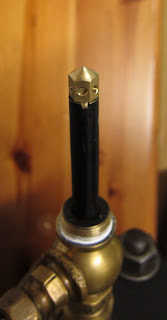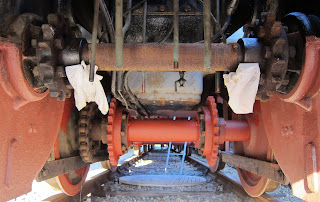Starting out at Mendip Steam Restorations Ltd, Paul (star of the day) of R J King first puts the boiler on the lorry. (Also on YouTube).
About here:
 |
| On the back of a lorry (from where it must not fall off) |
 |
| Stoke St Michael's motorway |
 |
| No boilers coming the other way |
 |
| Summit to think about! |
 |
| Not seen each other for a while! |
 |
| Attach the chains for the lift... |
 |
| ...put it over here... |
 |
| ...through that hole in the cab roof... |
 |
| ...down a bit... |
 |
| ...to here |
Followed by this: (Also on YouTube).
Finally 7109 ends up back on the level, parallel to the ground, for the first time in years.
 |
| Back on the level |





























